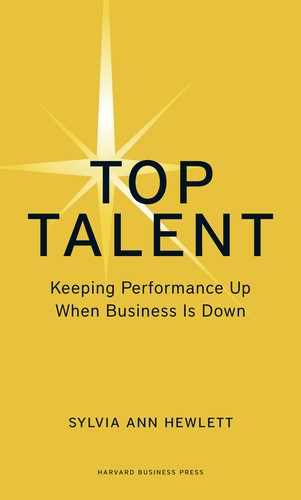Notes
The Hidden Brain Drain Task Force was founded in February 2004 by Sylvia Ann Hewlett (Center for Work-Life Policy and Columbia University), Carolyn Buck Luce (Ernst & Young) and Cornel West (Princeton University) to help corporations leverage their talent across the divides of gender, generation and culture. Comprised of senior leaders from fifty global corporations, the task force represents 4 million employees in 152 countries. Members are united by an understanding that the full utilization of the talent pool is at the heart of competitive advantage and economic success. The Hidden Brain Drain Task Force has completed five major research studies and helped seed more than seventy best practices.
Sylvia Ann Hewlett and Carolyn Buck Luce, “Extreme Jobs: The Dangerous Allure of the 70-Hour Workweek,” Harvard Business Review, December 2006.
2006 data is derived from two Center for Work-Life Policy surveys: a U.S. survey of 1,564 high-income employees (844 men and 720 women) and a global survey of 975 managers at large multinational companies (652 men and 323 women). For more detail, see Seduction and Risk: The Emergence of Extreme Jobs (New York: Center for Work-Life Policy, 2007).
The 2007 and 2008 data is derived from a series of focus groups and Virtual Strategy Sessions (VSSs)—a proprietary research tool of the Center for Work-Life Policy. Virtual Strategy Sessions comprise innovative “virtual” focus groups designed to facilitate participatory group discussion and brainstorming through simultaneous online and voice communications. Qualified participants in the sessions were high-potential employees (junior and senior, running the gamut from manager to vice president, from analyst to managing director) who worked in companies identified as “Wall Street” and “Main Street.” A total of 266 men and women took part in the focus groups and strategy sessions.
January 2009 data is derived from a Center for Work-Life Policy demographic survey of 1,046 U.S. male and female college graduates.
“Sustaining High Performance in Difficult Times: A Special Report” is available at http://harvardbusiness.org/.
Data in this paragraph comes from Sylvia Ann Hewlett, Off-Ramps and On-Ramps (Harvard Business School Press, 2007).
